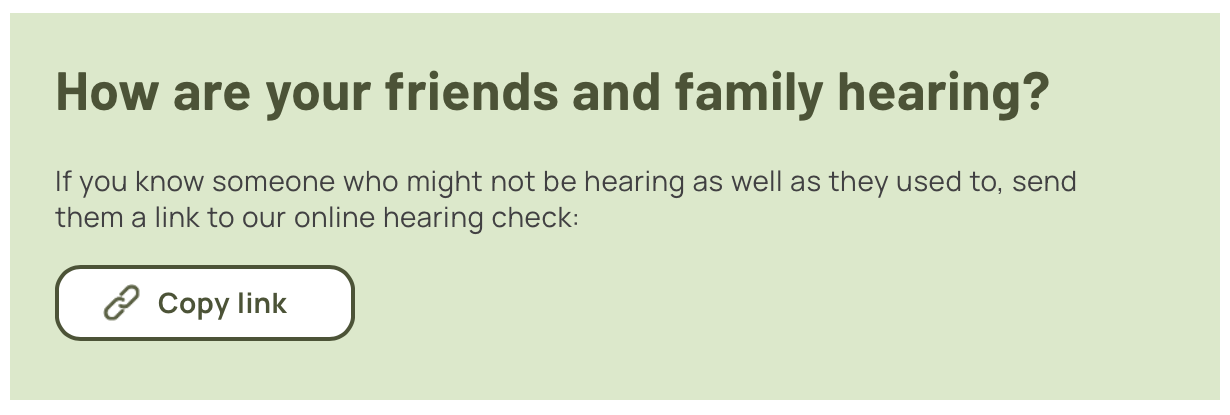Background
Taking early action on hearing loss can lead to huge improvements in your day-to-day life and cognitive function. Yet, it takes, on average, 10 years for someone to seek help after first becoming aware of hearing difficulties.
RNID want to shorten this time and make it as normal to check your hearing as it is to check your eyesight or your teeth. They offer a free online hearing test which can detect hearing loss and acts as someone’s first step on their hearing loss journey.
We’ve been working with them to consider how behavioural science could be used to help optimise their hearing test ahead of their latest campaign: #CheckYourHearing.
Insight
Before we could make recommendations for the hearing test, we had to understand what leads people to decide to take it in the first place. We commissioned research from Revealing Reality to discover what was keeping real people who were struggling with hearing loss from seeking help.
Findings suggested the stigma and negative associations with both hearing aids and hearing loss were the main reasons people delayed treatment for so long. Getting treatment was viewed as an admittance of old age and an additional impairment, made worse by a lack of understanding of the treatment process.
The biggest reason for not taking action? I really don’t want hearing aids
Existing models of the hearing loss journey suggest it’s a 7-step linear process from pre-awareness to resolution. Our research found the process is not linear – people tend to manoeuvre between different stages and the experience of hearing loss is ‘situational’ not constant.
Once aware of hearing difficulties, there’s a gradual progression towards considering taking action.

Our evidence and research found two behavioural objectives we needed to focus on:
- How to trigger people in the pre-awareness and awareness stages to give RNID’s online hearing check a go
- How to maximise the number of people who go on to take further action following the test
Intervention
In a workshop with external experts and RNID stakeholders, we used behavioural science tools to generate ideas for interventions that tackle these two behaviours. Tools used include:
- Make it easy
- Make it attractive
- Socal norms
- Right place, right time
From these interventions, we developed a menu of recommendations that RNID could use to take forward. The interventions centred around evolving the hearing check to maximise its appeal and using the power of social norms to encourage others to take the test.
Implementation
RNID launched their #CheckYourHearing campaign in September 2022 testing some of our intervention recommendations.
Adding a counter to the hearing test page plays on social norms by actively showing its growing popularity.

Language surrounding the test moved towards being more behaviour-focused – from finding out ‘whether you have hearing loss’ to finding out ‘whether you need to see someone about your hearing’, making it clear and easy for users to know what to do next.

Adding the ability to share with family and friends addresses how common hearing loss is and creates a social norm around checking your hearing.

Impact
The Check Your Hearing campaign led to an increase in over 150,000 people taking the hearing check. After 12 weeks from doing the hearing check, 82% of respondents to a survey reported taking practical action on their hearing loss.
Check Your Hearing was also highly commended as Communications Campaign of the Year at the Third Sector Awards 2023